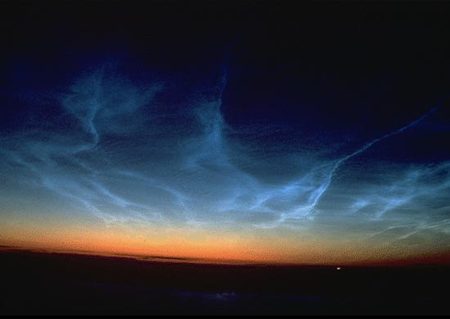 Noctilucent clouds. Source of photo: http://apod.nasa.gov/apod/image/9907/noctilucent_pp.jpg
Noctilucent clouds. Source of photo: http://apod.nasa.gov/apod/image/9907/noctilucent_pp.jpg
The excerpt below is from a WSJ summary of an article from the June 2007 issue of Seed.
Many other scientific discoveries have come from astronauts puzzling over strange sights around them. Most of what is known about so-called noctilucent clouds — thin, beautiful wisps that hover at the edge of the Earth’s atmosphere — comes from 30 years of astronauts sketching and trying to photograph them in their spare time. The strength of a certain type of cosmic ray was first recognized in 1969 when Buzz Aldrin asked fellow astronauts if they, like him, were seeing occasional streaks of light when their eyes were closed.
Such discoveries off the beaten path of the National Aeronautic and Space Administration’s research agenda prompt the question attributed to an Apollo program geologist: "If human beings can do much better science than robots, why does NASA make its astronauts do science like robots?"
For the full summary, see:
